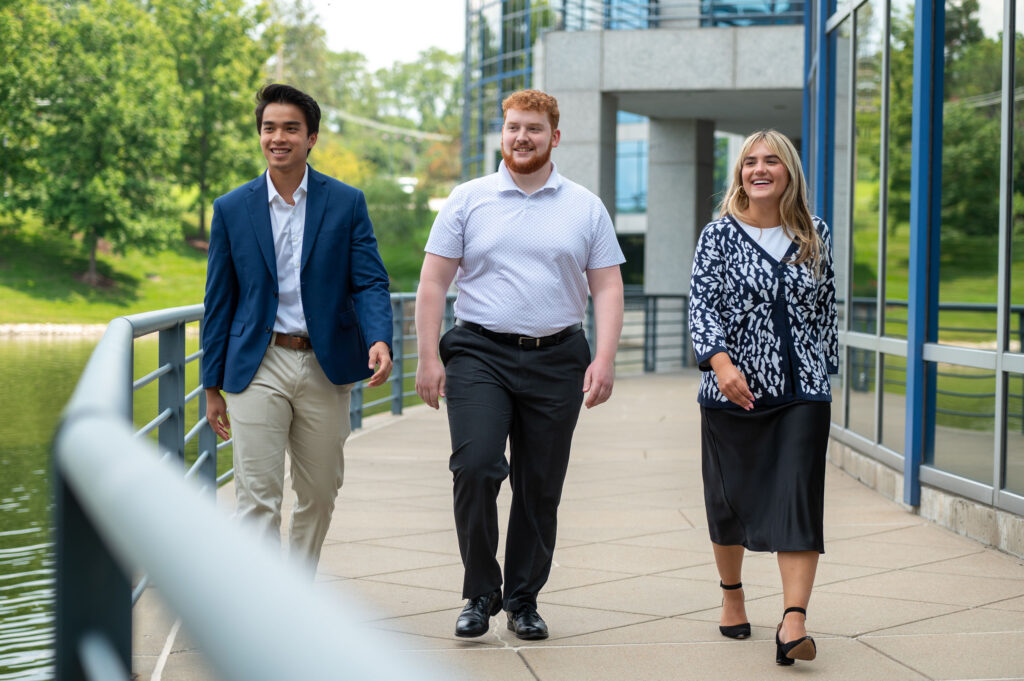The best time to think about succession planning for your team is two years ago. The second best time is today.

The best time to think about succession planning for your team is two years ago. The second best time is today.
As the leader of our Crew team, I have a unique cross-section view into corporations and organizations across the country – Fortune 500 companies, driven by brilliant and forward-thinking people leaders who are constantly evolving to meet tomorrow’s needs.
As I observe these people leaders, I’m often struck by the relentless barrage of priorities, all seemingly urgent, that compete for their energy and budgets. Everyone handles this differently; I see people leaders who have shiny object syndrome, with attention quickly bouncing from trend to trend as they fight for relevancy in the marketplace, looking for experts, easy answers, and quick wins so they can move to the next topic. I also see forward-thinking people leaders who focus less on instant gratification and more on the long game – balancing the need to deliver quarterly profits or successful project outcomes by tackling these urgent priorities with a holistic consideration of the future. While delivering on the here and now, they still remember to prioritize developing the people they have, considering what they’ll leave behind as they continue to grow in their own careers. This second category of leaders reminds me of the familiar quote, attributed to a Greek proverb: A society grows great when old men plant trees in whose shade they know they shall never sit.
Realistically, there will not be a lot of shade-sitting for most workers. According to a recent Forbes article, The average tenure of an employee in one job in 2023 was 4.1 years. Workers aged 55 to 64 had an average tenure of 9.9 years, while workers aged 25 to 34 had an average tenure of only 2.8 years. Considering the ramp up time required for a new employee, this means a team may spend a significant portion of an employee’s tenure getting them up to speed – before they ultimately and suddenly go elsewhere. This results in a huge loss of team productivity and efficiency on top of all the cultural disarray that comes from team members leaving. Exacerbating this conundrum further, I recently learned that 2024 marks a surge called Peak 65; starting in 2024, we’ll have over 4 million Americans retiring annually through 2027 – talk about turnover! People leaders are feeling the pressure from all this employee attrition on top of their actual jobs and the priorities and projects they must see through. What does this all mean? Not only are we seeing peak retirements, but those in the workforce are less likely to stick around, making succession planning and retention more critical than ever.
If you are a people leader, I urge you to be like your forward-thinking peers and plant those trees – consider who can do more on your team, who is ready to level up, and how to backfill their workloads without disrupting the hum of the day to day operations on your team. My advice? Bring in junior people to let them shadow and learn from the experts, let the experts be freed up to do higher level strategy work, and take care of succession planning along the way. New team members can document their learnings and the ongoing processes, creating an artifact of internal knowledge sharing that lives on and keeps information in house, not walking out the door when your old folks retire and your new folks get a new job. Easier said than done, right?
I recently spoke with an HR leader of an IT department at a nearly $7 billion global company who lamented the lack of an early career talent pipeline in his organization; to start such a pipeline, we discussed, takes time, resources, passion, structure – it must be programmatic in order to scale and succeed. He wished they’d have started such a program a few years ago, but was daunted by the task of starting one now, especially without concrete budgetary commitment for the next few years. What to do?
Enter Crew – a program for high-performing early-career consultants, used by these forward-thinking leaders who are partnering with us to build talent pipelines and plant those trees. We do the heavy lifting when it comes to bringing in recent grads, because our hiring, training, and support models are mature. We planted seeds 15 years ago, and those seeds have grown into Crew, a well-oiled program with a highly effective care model that helps launch the best and brightest young talent. One long-term client of ours reported that these junior Crew consultants have become some of the most valuable team members they have, bringing fresh perspectives, innovative ideas, and a strong work ethic, literally transforming the productivity, energy, and capacity of their teams for the years ahead.
Succession planning is not just about replacing outgoing employees; it’s about ensuring continuity, fostering growth, and building resilience within your team and organization. It requires foresight, investment, and commitment. While it may seem daunting to start now, the reality is that there’s no better time than the present.
By partnering with Crew, organizations can leverage our existing expertise and infrastructure to kickstart succession planning efforts. Whether it’s developing early-career talent pipelines or upskilling entire teams with new technology and ways of working, these initiatives introducing fresh perspectives lay the groundwork for future success.
Remember, the best time to think about succession planning for your team is always now. Don’t wait until it’s too late. Start planting those trees today, and you’ll reap the benefits for years to come.
Enjoy the shade.
Succession planning is not just about replacing outgoing employees; it’s about ensuring continuity, fostering growth, and building resilience within your team and organization. It requires foresight, investment, and commitment. While it may seem daunting to start now, the reality is that there’s no better time than the present.
Continue reading

Q2 2025 Compliance & Remediation Update
Introduction Welcome to our Turnberry Compliance and Remediation update for Q2 2025. Each quarter, our C&R…

Navigating Salesforce Marketing Automation: which tool is right for you?
With the introduction of Salesforce Marketing Cloud Next, the landscape of Salesforce’s marketing automation suite has…

A key driver of early career success: social capital
In a recent training, a colleague shared a stat that stopped me in my tracks: when…